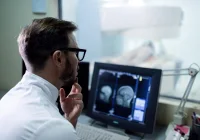Radiology enables timely diagnosis and guides treatment across care pathways, yet it carries a measurable environmental cost. Evidence gathered over five decades points to high energy consumption from advanced modalities, persistent waste streams from nuclear medicine and contrast agents and practice patterns that shape overall impact. Despite a large volume of publications touching on sustainability, comparatively few provide primary data or use life cycle methods, which limits comparability and planning. Findings mapye where emissions and pollutants arise in routine imaging, what has been measured, and where interventions have reduced energy use and waste. They also flag gaps that need targeted research and standardised reporting to support greener decisions in clinical operations, procurement and service design.
Energy Use and Operational Drivers
Energy demand is the most studied contributor to radiology’s footprint. Across sources that directly measured or modelled consumption, MRI and CT account for the largest annual loads, with MRI clearly outpacing CT. Lower demand is seen in radiography, workstations and ultrasound, which cluster far below the heavy scanners. Departments also experience substantial cooling loads for scanner rooms, often above typical hospital areas, amplifying the electricity burden.
Idle time is a major lever. MR systems in routine practice spend most hours unused yet still draw significant power in idle and even off modes, CT shows a similar pattern. Interventional suites consume the bulk of electricity outside active imaging, reflecting lighting, climate control and standby equipment. These patterns translate into measurable savings from straightforward operational changes. Overnight shutdowns and power-save modes on MRI cut energy use considerably, with additional gains when deeper hibernation is possible. Partial or full CT shutdowns outside clinical hours reduce annual consumption, and reading rooms benefit from automatic shutdowns and schedule-linked power management.
Protocol and workflow optimisation complement equipment controls. Shorter or abbreviated MRI protocols reduce scan time and associated emissions. Sequence tuning and acceleration approaches lower per-scan energy while increasing capacity. Department-level scheduling that tightens gaps between exams curbs idle energy. Regenerative measures, such as heat recovery from equipment, adjustments to chiller water temperatures and LED upgrades, lower background loads. Modality substitution, where clinically acceptable, offers system-wide benefits by replacing a share of higher-energy exams with lower-energy options. Inappropriate imaging adds a hidden burden, large datasets attribute a material share of emissions to scans that could have been avoided, highlighting the importance of adherence to indications and guidelines.
Waste Streams in Practice
Persistent radionuclides from nuclear medicine have been detected in hospital effluent, sewage sludge, air and coastal ecosystems since the 1970s. Common findings include iodine-131 and technetium-99m in wastewater, residual activity after conventional treatment and evidence of bioaccumulation in marine organisms near discharge points. Airborne releases during specific procedures and operational scenarios have been measured, and surface contamination risks extend to waste handling areas. Audits have identified radioactive excreta in general trash and lead dust contamination in storage or clinical spaces.
Mitigation strategies show effectiveness when matched with isotope properties and local infrastructure. Delay and abatement tanks reduce radionuclide activity before discharge, with decay times aligned to half-lives. Storage of production waste lowers exposure from short-lived fluorine-18, while long-lived impurities such as 177m-lutetium require multi-year storage. Cyclotron facilities have reduced airborne emissions through engineered stacks and storage systems. Procedural modifications, including the use of mouthpieces and adjusted airflow during ventilation imaging, have lowered technetium aerosolisation without compromising imaging objectives.
Must Read: AI in Radiology: The Sustainability Paradox
Contrast media present a parallel concern. Iodinated agents and gadolinium-based contrast are consistently detected in hospital effluent, wastewater plants, rivers and oceans. Reported discharges range from hundreds of grams per day from single sites to multi-ton annual regional loads. Concentrations correlate with scanner density and proximity to clinical centres, and aquatic biota show evidence of gadolinium accumulation. Within departments, waste arises from single-use consumables and packaging linked to contrast delivery.
Operational changes can curtail both chemical and material waste. Multi-use or syringeless injector systems reduce iodine discard alongside plastic waste and staff time, though product-specific trade-offs exist compared with some multi-dose configurations. Decentralised urine collection after imaging captures a meaningful share of excreted contrast, and extended post-scan observation increases recovery for first-void urine. For wastewater treatment, reverse osmosis has outperformed microfiltration for gadolinium removal in reported evaluations, offering a route to reduce downstream aquatic impacts.
Methods, Gaps and Practice-Level Footprints
Only a small fraction of available work employs life cycle analysis or hybrid modelling to capture upstream supply chains, facility operations, consumables and downstream effects. Where conducted, per-scan CO₂e varies by modality and scope. MRI spans single-digit to several-dozen kilograms, CT is typically lower, and radiography and ultrasound are lower still. An interventional radiology assessment attributed nearly half of case-level emissions to climate control and a similar share to single-use supplies, underscoring the role of room conditioning and product choice. Department-wide analyses link high-volume diagnostic activity to large annual CO₂e totals across multiple modalities. Differences in methods and boundaries complicate cross-study comparison, making it difficult to benchmark or set targets.
Related specialties illustrate the importance of service design. In radiation oncology, fewer visits through hypofractionation and shifts to virtual care cut emissions primarily by reducing travel. In primary care and cardiology, point-of-care ultrasound and modality selection influence both environmental and logistical outcomes. Administrative processes also matter. Switching from postal to web-based booking reduces emissions tied to paper and transport, though digital tools carry embodied impacts that should be accounted for when possible. Solid waste audits reveal heavy packaging burdens for interventional products, with many materials potentially recyclable if systems are configured, and targeted education has reduced infectious waste generation in procedural areas.
Across topics, the evidence base remains fragmented. Outcome metrics, scopes and terminology vary widely, and many areas are underexplored. Breast imaging, nuclear medicine energy demand, informatics and AI workloads and cross-specialty pathway footprints require further study. Wider use of life cycle methods and harmonised reporting would enable benchmarking, support procurement specifications and guide operational priorities. Organisational factors such as training, resources and leadership support influence adoption, so measurement must be paired with implementation capability.
Radiology contributes materially to healthcare’s environmental footprint through energy-intensive modalities, persistent radionuclide and contrast discharges, and single-use consumables embedded in daily operations. Practical interventions already demonstrate savings, from power-down policies and sequence optimisation to engineered abatement and redesigned contrast workflows. Progress depends on consistent measurement and comparable reporting. Wider adoption of life cycle approaches, clearer boundaries and metrics, and targeted research in underexamined domains can align clinical performance with environmental stewardship, informing decisions in departmental management, capital planning and pathway design.
Source: Journal of the American College of Radiology
Image Credit: iStock










